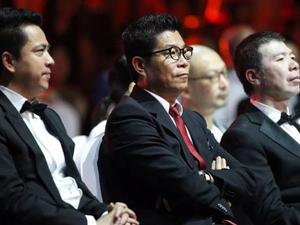原标题:2021年是天然气行业发展决定性的一年
中国石化新闻网讯 据伍德麦肯兹1月14日报道,在其最新的展望报告中表示,2021年将是天然气和液化天然气行业决定性的一年。
伍德麦肯兹副总裁Massimo Di Odoardo表示:“政策制定者们需要就脱碳计划提供清晰的说明,包括他们如何看待天然气的作用,以实现气候中立的承诺。天然气企业必须承诺通过碳捕获、利用和储存(CCUS)以及蓝氢等方式实现天然气的脱碳。天然气脱碳将成为天然气行业的战略重点。”
在展望报告中,伍德麦肯兹确定了今年将影响该行业发展的四个主题。
一是,亚洲和欧洲支持中期天然气需求政策。
目前全球近50%的碳排放和75%的液化天然气需求都由碳中和目标国家承担。天然气在能源结构中的弹性将取决于政策制定者为实现净零目标所采取的措施。
由于煤炭在亚洲能源结构中所占比重超过50%,加快“煤改气”的步伐是关键主题。在欧洲,德国和波兰有更多的燃煤电厂退役,并可能在中期支持更多的天然气利用,其他欧洲国家也正在发生类似的情况。此外,支持CCUS和蓝氢的坚定政策,将支持难以脱碳行业的天然气需求。
二是,2022年欧洲有大规模的CCUS和蓝氢项目将获得FID。
整个天然气价值链的参与者宣布了开发大型CCUS项目的建议,以推动本地产业集群脱碳或结合蒸汽甲烷转化炉(SMR)使用,从天然气中生产蓝氢。
工业和发电厂的CCUS也有了新的发展势头,捕捉二氧化碳的成本可能超过每吨100美元。公众支持和监管,以及新的商业模式,都是支持近期该行业发展的关键。
Di Odoardo表示:“各公司正在结成伙伴关系,以利用规模经济,分担整个价值链的投资成本,并将副产品货币化。占全球二氧化碳排放量15-20%的产业集群正在成为一个“甜点”,因为它融合了工业、公用事业、基础设施企业和国际石油公司的兴趣和专业知识。今年的项目需要显示出切实的进展,这些项目的成功对于确保天然气在未来的能源结构中保持弹性至关重要,因为各国都制定了实现净零能源系统的计划。”
三是,亚洲液化天然气需求将保持强劲。
2021年TTF(天然气)平均价格为5.6美元/百万英热,亚洲LNG现货平均价格为7.6美元/百万英热。今年夏天,全球液化天然气价格从2美元/百万英热大幅攀升,亚洲液化天然气价格超过20美元/百万英热。第二季度价格将会下降,但目前北半球的寒流表明,仅仅一个月前看起来供需还很平衡的夏季,现在看来似乎越来越紧张。
Di Odoardo表示:“LNG价格飙升主要是由寒冷天气、供应中断、航运能力不足以及巴拿马运河的延误造成的。基本面因素也发挥了作用,要知道,亚洲2020年第四季度的液化天然气需求已经处于新冠肺炎疫情爆发前的水平。由于目前的寒流预计将持续到1月下旬,2021年第一季度亚洲液化天然气需求将保持强劲,为整个北亚地区夏季液化天然气库存的额外消耗铺平了道路,这也将减少欧洲在夏季吸收过剩液化天然气供应的压力。”
尽管全球液化天然气供应预计将在2021年增加1700万吨(Mt),主要是由于整个夏季美国液化天然气的充分利用,但目前北半球的寒流正在为全球全年的天然气市场趋紧铺平道路。低温意味着欧洲的储存水平比去年低了150亿立方米,现在已接近过去五年的平均水平。此外,煤炭和欧洲碳价格上涨的预期,也部分受到当前寒潮的推动,为欧洲夏季天然气需求增加提供了空间。
Di Odoardo表示:“2020年,全球LNG价格创下历史新低,TTF平均价格为3.2美元/百万英热,亚洲LNG现货价格平均为3.9美元/百万英热。2021年将出现明显的差异,我们预计TTF平均为5.6美元/百万英热,亚洲LNG现货平均为7.6美元/百万英热。”
四是,卡塔尔承诺将继续推进3200万吨/年的LNG开发项目。
继去年大量液化天然气项目被取消后,目前的高油价将使液化天然气开发商胆子更大。然而,对于新项目的开发,合同活动将需要恢复。买家将评估他们的投资组合需求,以及他们对新的长期液化天然气项目和增加现货市场的敞口满意程度。
Di Odoardo表示:“买家将希望了解现货液化天然气价格在经历了冬季的炒作后,今年夏季的弹性有多大。在东北亚各国做出碳中和承诺后,他们还希望明确国内对天然气的政策态度。买家将相信,2025年后将有一波未签订合同的液化天然气进入市场,包括加拿大液化天然气(1400万吨)和2019年已获得FID的项目(7000万吨)。但在持续拖延之后,他们可能开始质疑卡塔尔迅速推进其每年3200万吨North Field East项目的承诺。到2030年,市场将需要约8500万吨/年的新增液化天然气供应。如果卡塔尔在今年早些时候采用FID,大多数买家将不会急于获得更多的长期供应,尽管目前布伦特原油指标值低于11%,尽管亚洲冬季LNG现货价格飙升,但买方市场仍然存在。不过,卡塔尔FID的进一步推迟将推动一些买家寻找新的长期承诺。”
王佳晶 摘译自 伍德麦肯兹官网
原文如下:
Future of gas in energy transition to be defined in 2021
2021 will be a defining year for the gas and LNG industry, says Wood Mackenzie in its latest outlook report.
Wood Mackenzie vice president Massimo Di Odoardo said: “Policy makers will need to provide clarity on decarbonisation plans, including how they see the role of natural gas, following pledges to achieve climate neutrality. Gas players will have to show commitments to decarbonise natural gas, including through carbon capture, utilisation and storage (CCUS) and blue hydrogen.
“Decarbonising natural gas will become a strategic priority for the gas industry.”
In the outlook report, Wood Mackenzie identified four themes that would impact the industry this year.
Asian and European policies to support gas demand in the medium term
Almost 50% of today’s global carbon emissions and 75% of today’s LNG demand are covered by countries with carbon neutral goals. The resilience of gas in the energy mix will depend upon the pathways policy makers adopt to achieve net-zero targets.
The acceleration in coal-to-gas switching is a key theme to watch in Asia as coal accounts for over 50% of the region’s energy mix. In Europe, additional coal plant retirals in Germany and Poland could support more gas utilisation in the medium term, similar to what is happening in other European countries. Additionally, firm policies in support of CCUS as well as blue hydrogen, would support gas demand in hard to decarbonise sectors.
Large-scale CCUS and blue hydrogen projects in Europe could take FID in 2022
Players across the gas value chain have announced proposals for the development of large-scale CCUS projects to decarbonise localised industrial clusters and/or to use in combination with steam methane reformers (SMRs) to produce blue hydrogen from natural gas.
New momentum is building up for CCUS for industrial and power plants too, where costs for capturing CO2 could be in excess of US$100 per tonne CO2. Public support and regulation, as well as new business models have all been key to support recent developments.
Di Odoardo said: “Companies are forming partnerships to exploit economies of scale, share investment costs across the value chain and monetise by-products. Industrial clusters, which account for 15-20% of global CO2 emissions, are emerging as ‘sweet spots’, combining interests and expertise from industrials, utilities, infrastructure players and international oil companies.
“Projects will need to show tangible progress this year. Their success will be crucial to ensure gas remains resilient in the future energy mix as countries sets out plans to achieve net-zero energy systems.”
2021 prices: TTF to average US$5.6/mmbtu and Asian LNG spot average US$7.6/mmbtu
Global LNG prices have made an impressive climb from the US$2.0 per million British thermal units (mmbtu) experienced for most of the summer, with Asian LNG prices trading above US$20/mmbtu. Prices will come down in Q2, but the current cold spell in the northern hemisphere signal what looked like a finely balanced summer just a month ago, is now looking increasingly tight.
Di Odoardo said: “Much of the LNG price spike has been driven by cold weather, supply disruption and lack of shipping capacity, and delays at the Panama Canal. Fundamentals have been playing a role too, with Asian LNG demand in Q4 2020 already at pre-coronavirus levels.
“With the current cold spell expected to continue throughout most of January, Asian LNG demand in Q1 2021 will remain strong, paving the way for additional demand for LNG stocking in the summer across North Asia. This, in turn, will reduce the pressure on Europe to absorb excess LNG supply in the summer.”
Despite global LNG supply expected to increase by 17 million tonnes (Mt) in 2021, mainly as a consequence of full utilisation of US LNG through the summer, the current cold spell in the northern hemisphere is paving the way for a tighter global gas market throughout the year. Low temperatures mean that storage levels in Europe are already more than 15 billion cubic metres lower than last year and are now close to the past five years’ average. On the other hand, expectations of higher coal and European carbon prices, also partially driven by the current cold spell, provide headroom for higher European summer gas demand.
Di Odoardo said: “Global prices reached record lows in 2020, with TTF averaging US$3.2/mmbtu and Asian LNG spot averaging US$3.9/mmbtu. 2021 will show a stark difference, we anticipate TTF averaging US$5.6/mmbtu and Asian LNG spot averaging US$7.6/mmbtu.”
2021 long-term contract signing to hang on Qatar’s resolution to press ahead with North Field East
Following a raft of LNG project cancellations last year, current high prices will have emboldened LNG developers. However, for new projects to be developed, contract activity will need to pick up. Buyers will be looking to assess their portfolio requirements and just how comfortable they are in committing for new long-term firm LNG vs increasing their spot market exposure.
Di Odoardo said: “Buyers will want to understand just how resilient spot LNG prices will be this summer, following the hype in the winter. And they will want clarity on domestic policy attitudes towards gas, following carbon neutrality pledges in Northeast Asia. Buyers will be confident that a wave of uncontracted LNG will be hitting the market post 2025, including from LNG Canada (14 Mt) and the projects that have taken FID in 2019 (70 Mt). But they might start questioning Qatar’s commitment to quickly move forward with its 32 million tonnes per annum (mmtpa) North Field East project, following continued delays.
“The market will need around 85 mmtpa of new LNG supply by 2030. Provided Qatar takes FID early this year, most buyers will be in no rush to secure more long-term supply, despite oil indexation levels being below 11% Brent currently. A buyer’s market remains despite the current winter Asian LNG spot price spike. However, further delays to Qatar’s FID, will push some buyers to look for new long-term commitments.”

APP专享直播
热门推荐
收起
24小时滚动播报最新的财经资讯和视频,更多粉丝福利扫描二维码关注(sinafinance)












